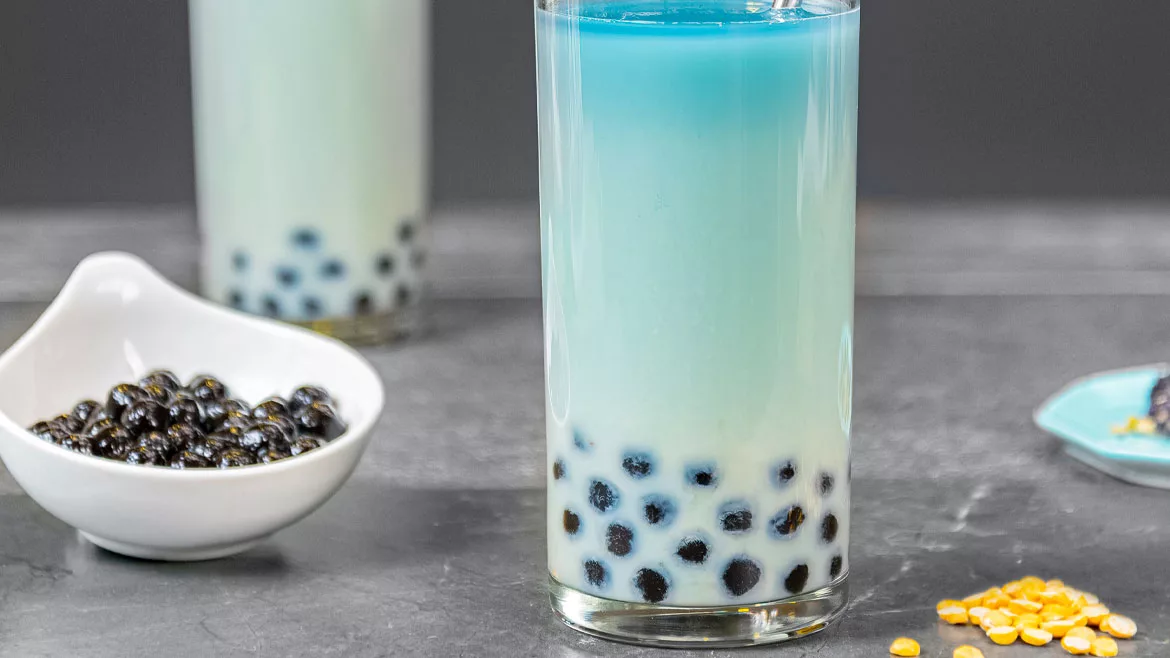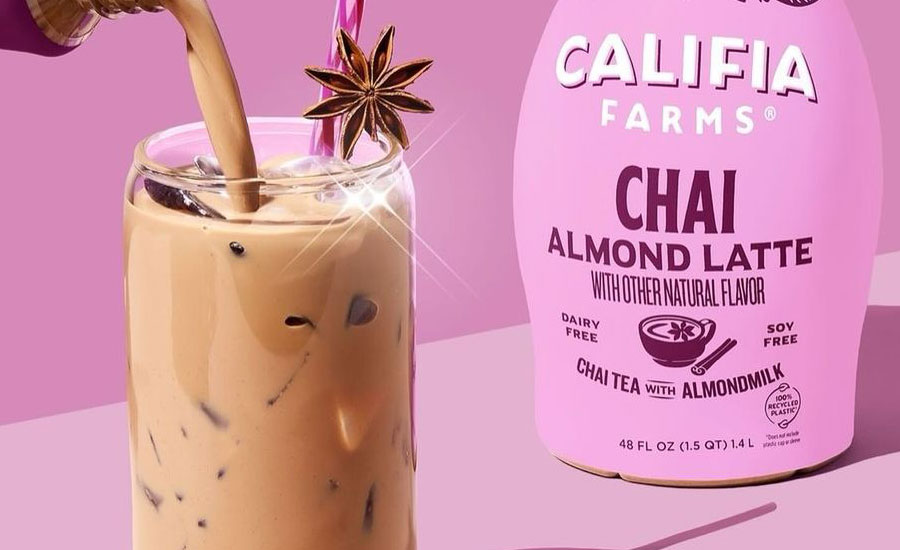Sweetener solutions satisfy consumer tastes
Beverage-makers diversify sweetener usage with zero-sugar solutions

Image courtesy of Ingredion Inc.
Known for leading the successful campaign for India’s independence from British rule and inspiring movements for civil rights and freedom across the world, Mahātmā Gandhi is quoted for saying, “Action expresses priorities.”
Likewise, when it comes to trends influencing the beverage market, consumers’ preferences for various sweeteners is being expressed through their drink purchases.
“There is a notable inclination toward natural sweeteners rather than synthetic alternatives,” says Linnea Halter, marketing coordinator at Global Organics, Cambridge, Mass. “In addition to cane sugar, consumers are choosing organic sweeteners including honey, agave syrup and coconut nectar. These sweeteners typically have lower glycemic indices than standard white sugar and are more nutrient-rich.”
Amber McKinzie, product marketing manager for sugar reduction at Cargill, Minneapolis, notes that sugar remains the most scrutinized sweetener, but artificial sweeteners aren’t far behind.
“Shoppers rank promises of ‘no artificial sweeteners’ among the most influential on purchase decisions but claims around sugar content — including ‘no added sugar,’ ‘reduced sugar’ and ‘sugar-free’ — also carry weight with large numbers of shoppers,” she says, citing 2024 Cargill proprietary consumer research.
“Most importantly, consumers are following through with actions,” McKinzie continues. “Innova’s database of product launches finds significant sales growth associated with many of the same sweetener-related claims. Beverages positioned as ‘low sugar’ delivered a double-digit 11% CAGR from 2019-2024, while sales for drinks with a ‘sugar-free’ claim posted an even more impressive 18% CAGR over the same period.”
Thom King, chief innovations officer at Icon Foods, Portland, Ore., says that sugar reduction remains a “massive” trend impacting consumer behaviors.
“People want less sugar in their beverages and they also want a clean label. Less sugar, no aspartame, no sucralose — and they want it to taste great,” he explains.
“As far as trends that influence the sweeteners market, gut health continues to be a priority to consumers,” King continues. “Prebiotic fibers support gut health and pair brilliantly with high-intensity sweeteners because of their characteristics that coat the tongue and allow for sweeteners to work their way across the palate, giving it the full sensory effect.”
Janae Kuc-Langford, marketing manager of beverage and nutrition categories at Ingredion, Westchester, Ill., points to health and wellness macro trends as reshaping the sweeteners market as consumers seek better-for-you options.
“According to an Ingredion proprietary sugar reduction study, 79% of U.S. consumers believe limiting sugar is important for their health,” she says. “Our Ingredion proprietary ATLAS research further reveals that 68% of consumers consider sugar-free claims important across food and beverage categories in North America.”

A variety of solutions
As consumers’ views of sweeteners have shifted in recent years, experts highlight how beverage manufacturers are turning to a variety of sweeteners in new product development.
Global Organics’ Halter explains how beverage-makers are choosing natural sweeteners to fit into clean label trends.
“Coconut nectar, prized for its low glycemic index and unique caramel flavor, is a favored option as it adds sweetness while enhancing taste, making it ideal for smoothies, energy drinks and flavored waters,” she says. “Agave syrup is another natural sweetener that is gaining popularity. With a low glycemic index and a neutral, sweet flavor profile … it is a versatile choice for reducing sugar in popular applications such as cocktails, teas and flavored drinks.
“Additionally, there is a growing trend of using agave inulin, a blend of agave inulin and sweet agave powder, for its sweetening properties and functional benefits that support gut health, making it suitable for functional beverages like fiber drinks and smoothies,” Halter continues.
Ihab Bishay, senior director of sweeteners at Itasca, Ill.-based Ajinomoto Health & Nutrition North America Inc., highlights how research and development teams are working to find diverse solutions that meet consumer demands for lower sugar content without compromising taste.
“Beverage manufacturers are using more and more sweeteners like aspartame and monk fruit to reduce sugar while preserving its sweet flavor,” Bishay says. “Taste and texture continue to be the major challenges associated with sugar reduction, which is creating white space for technological innovation, addressing this with upcycling, functional ingredients and fermentation.”
Cargill’s McKinzie points to stevia-based solutions as being featured prominently in beverage products, thanks to its sweet taste, zero-calories and artificial-free status.
“Today, Cargill’s sugar-reduction toolkit includes Truvia and ViaTech stevia leaf extracts, as well as fermentation-derived EverSweet stevia sweetener,” McKinzie says. “Thanks to its high sweetness, potency and clean taste, a small amount of EverSweet goes a long way in beverage formulations.
“With EverSweet, you get a cleaner, sweeter taste, with more upfront sweetness and less sweetness linger,” she continues. “Compare it to a Reb A-based stevia product, and the difference in off-notes and sweetness perception is night and day.”
McKinzie adds that erythritol is another key ingredient being used in many reduced-sugar beverage formulations.
“It pairs well with stevia and is used in many high-performing beverages,” she explains. “A combination of Truvia and Zerose erythritol may provide plenty of sweetening power for modest sugar reductions. For deeper sugar reductions, ViaTech or EverSweet may be a better choice, and for the most challenging formulations, our most advanced sweetener system, EverSweet stevia sweetener + ClearFlo natural flavor, is a game-changer.”
Icon Food’s King, notes that, in addition to organic Reb M stevia, there’s a growing interest in novel, protein-based sweeteners like thaumatin.
“We’re seeing more news about it and more major brands taking a look at using these clean label, plant-based protein sweeteners,” King explains. “Thaumatin is derived from the katemfe fruit and works best at very low inclusion levels of less than 0.05% as it is 2,000 to 5,000 times sweeter than sugar.
“Used in a small amount, it works as a natural sweetness modifier that boosts stevia and other high-intensity sweeteners to create a lingering sweet effect, allowing manufacturers to adjust the sweetness curve for the perfect flavor,” he continues. “I think we’ll start seeing more of these novel, protein-, plant-based sweeteners like thaumatin.”
King also anticipates the proliferation of allulose-based beverages as the industry moves closer to approving the sweetener in the EU. “I think once approved in the EU, Canada and Whole Foods, the market will catch up in adopting allulose as it’s a very functional sweetener that hasn’t gotten enough credit yet,” he says.

Mixing and mingling
As beverage-makers continue to develop sweetness profiles that cater to consumer preferences for healthier, natural and low calorie options, experts highlight how sweetener blending is being used in formulations.
Icon Food’s King explains that blending is essential to beverage formulations.
“It’s rare to find a new carbonated soft drink that just uses a single sweetener input because the taste experience is so different from what consumers expect with a full sugar beverage,” he says. “Often beverages that only use a single sweetener like stevia or monk fruit have a thin mouthfeel where the taste experience evaporates almost immediately. You drink it and it’s gone.
“Using fibers to extend the taste helps a lot, but fibers do more than just improve mouthfeel, they also aid in flavor conduction to make sure that sweetness is carried through the entire consumption of the beverage,” King continues.
Global Organics’ Halter also notes that sweetener blending can improve mouthfeel, especially in beverages that require a creamy or smooth consistency.
“Some sweeteners can alter the viscosity of a beverage,” she explains. “For example, combining agave syrup with sugar can enhance the thickness and body of syrups and smoothies.”
Halter adds that certain sweeteners have preservative properties, helping to extend shelf life.
“Blends can maintain flavor stability over time, which is crucial for bottled beverages,” she says. “Some sweeteners can help stabilize the pH of a beverage, which is important for maintaining taste and preventing spoilage.
“Blending also allows manufacturers to cater to health-conscious consumers by creating beverages that are labeled as ‘low-calorie’ or ‘naturally sweetened,’ which can enhance marketability,” Halter continues.
Cargill’s McKinzie says that, to attain higher levels of sugar reduction, sweetener blending is almost required.
“Erythritol, for example, boosts stevia’s up-front sweetness, rounds out its sweetness profile, and helps build back mouthfeel, without adding to the calorie load,” she explains. “As a further bonus, in the U.S., when used as a flavor modifier at an inclusion level of 2.5% or lower, erythritol may appear on ingredient statements as ‘natural flavor.’”
Ajinomoto’s Bishay highlights how combining different sweeteners allows the formulator to get closer to the overall taste profile of sugar.
“By combining different sweeteners, manufacturers can mask any unpleasant aftertastes and mimic the taste of sugar,” he explains. “Flavor scientists carefully stack different high-potency sweeteners to balance and mask any off-notes or aftertastes characteristic of any one sweetener. This technique helps keep product labels as ‘clean’ as possible while reducing sugar content and meeting consumer expectations for taste and texture.”
Flavor scientists carefully stack different high-potency sweeteners to balance and mask any off-notes or aftertastes characteristic of any one sweetener. This technique helps keep product labels as ‘clean’ as possible while reducing sugar content and meeting consumer expectations for taste and texture.
A sweeter future
Although taste determines the success of any product, experts anticipate that factors including sugar and calorie reduction, as well as clean label trends will continue to influence the sweetener market going forward.
Icon Food’s King expects that sweetener blends will continue to be the preferred choice for beverage manufacturers.
“Not only are they formulated to replicate the taste and mouthfeel consumers expect from sugar, they offer cost advantages as well as reducing the margin for error,” King says. “By adding one sweetening system instead of separate ingredients, it can provide greater consistency in your product and mitigate risk.”
Ajinomoto’s Bishay predicts that growing health and wellness trends will only further impact the market.
“Consumers are increasingly interested in the ingredients of the products they consume, and as the desire to reduce sugar intake grows, so does the demand for better-tasting, better-for-you options,” he explains. “Consumers are also looking to reduce sugar for long-term health versus just weight loss. This entails a holistic focus on immune health, digestive health, gut health, and more which is why functional sweeteners are gaining consumer excitement.”
Cargill’s McKinzie notes that another trend to watch out for centers on sustainability.
“Many beverage manufacturers have set bold sustainability goals around water, land use and carbon emissions,” she explains. “Ingredient sourcing will play a major role in their ability to meet those targets.”
Johnny Salazar, category manager for agave, honey and date syrup at Global Organics, lists several factors that he believes will hold major influence on the sweetener market going forward.
Looking ahead, Salazar anticipates that “consumer preferences in which health needs and diets will become a priority.” Meanwhile, technological advancements will help reduce aftertaste and enhance functionality in formulations, he says.
Other influencers include economic factors that “will spin off in costs of raw material and supply chain stability, sustainability and environmental concerns, such as water usage, land use and overall carbon footprint,” Salazer says.
“These factors will influence how sweeteners are developed and consumed in the coming years,” he concludes.
Looking for a reprint of this article?
From high-res PDFs to custom plaques, order your copy today!





